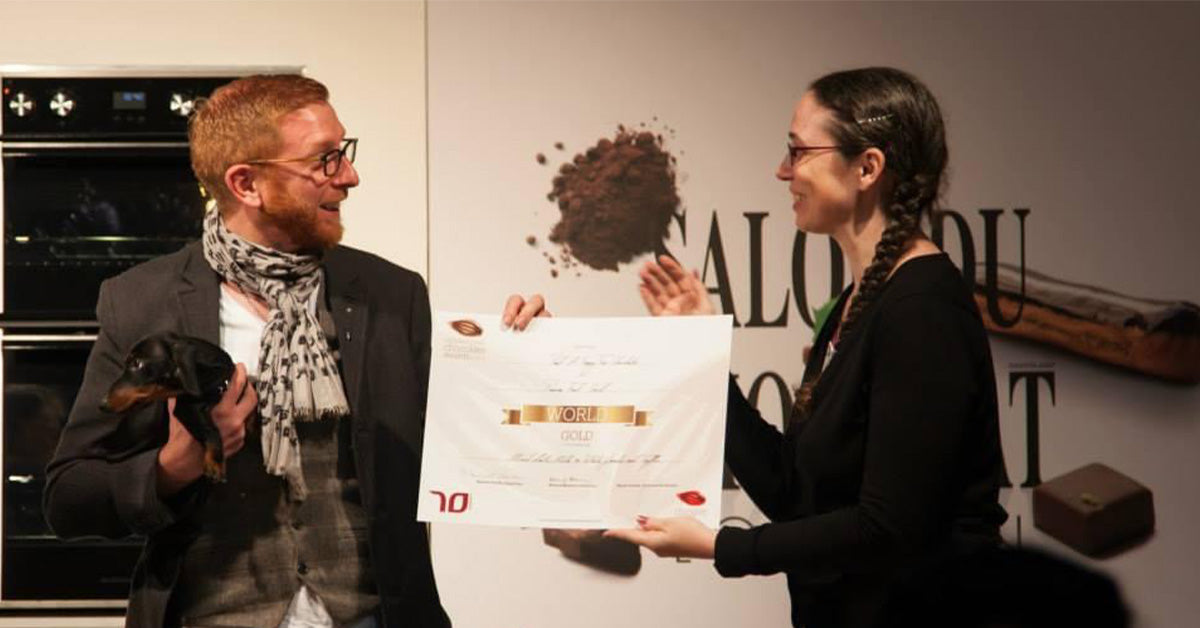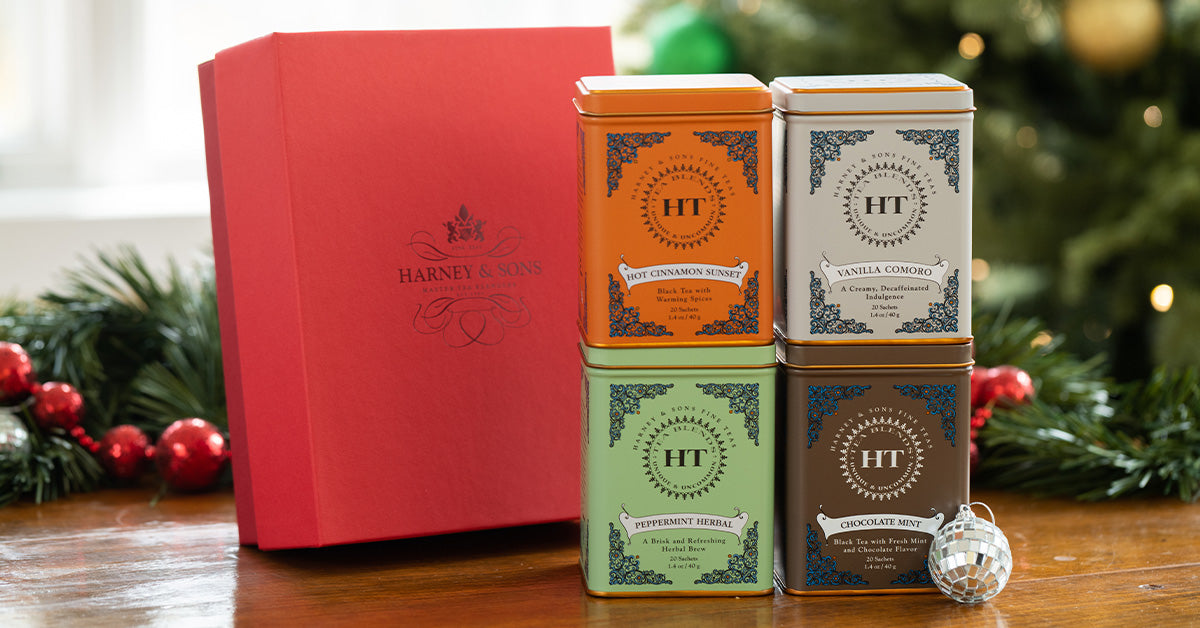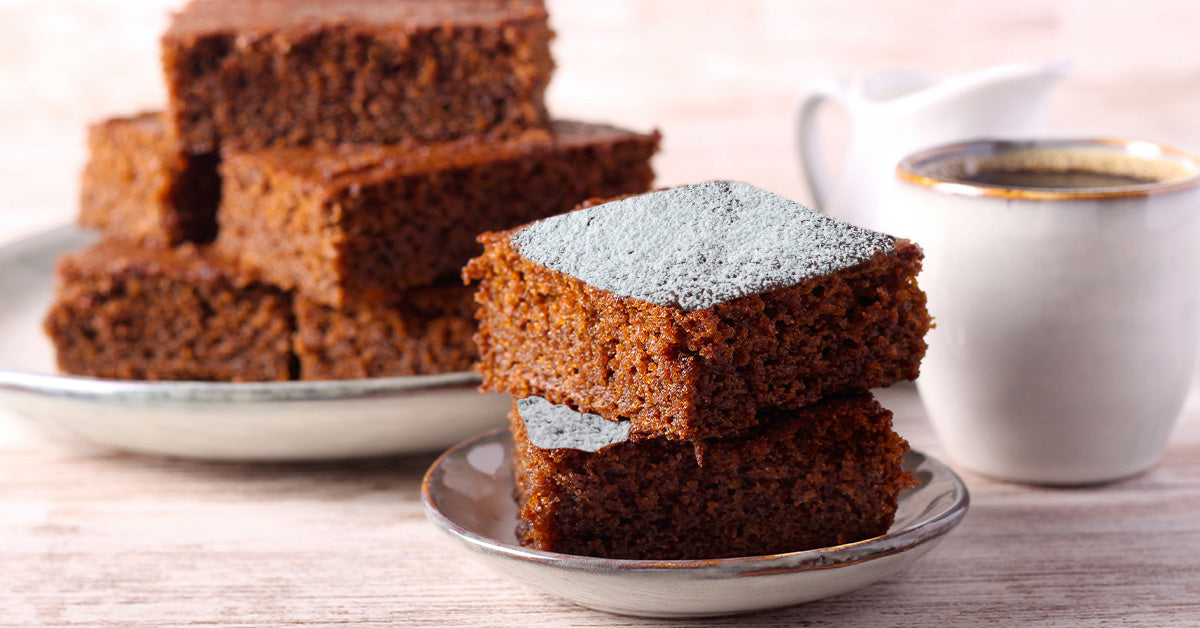
George Gensler
Chocophile, Foodie and World Traveler
If you love chocolate, you’re going to love reading about our November Teafluencer. George Gensler has the highly enviable job of tasting chocolate. A founding member of the Manhattan Chocolate Society and contributor to Dessert Professional magazine, George knows more than a little about chocolate. After you read this interview, you’re going to know more than you ever did, we promise! There are some very interesting commonalities with tea as well as other enlightening tidbits, like how to taste chocolate, eating cheese and chocolate and Japanese Kit Kats!
Harney: Tell us a little about you. Where are you from, educational/professional background, where you live, family, etc.
George: I was born in Texas, but didn’t stay long. My father was a pilot in the Navy, so we moved fairly frequently. I’d lived in three U.S. states by the time I turned one and on three continents by the time I turned eight. I’ve lived in Japan, Spain, Greece, Germany and the U.S. I live in NYC now and love it for itself and for its three airports that let me travel the world. I went to undergrad at Penn, then to Rutgers Law School. I’ve been working in publishing for most of my career, though as a freelancer since 2015.
Harney: So, chocolate! How did you get lucky enough to have a lot of your life’s work revolve around tasting chocolate? Where did your love of chocolate come from?
George: I have always loved chocolate. It was a big part of our diet growing up. I think we had chocolate for at least two of every three meals growing up. Because we were lucky enough to live abroad so much, we also got to taste chocolate from around the world. I have quite a broad palate food-wise and chocolate-wise.

Harney: You’re a founding member of the Manhattan Chocolate Society. What is the Society’s purpose, and why is that work important?
George: We are a tasting group based in Manhattan. Our primary purpose is education: ours, chocolate makers, other chocolate consumers, etc. We hold very focused tastings, which means we don’t have random assortments of bars in our tastings. Our tastings have been planned around origins, processing, packaging, etc. It can take months for us to put a tasting together.
It was through the Manhattan Chocolate Society that I became a permanent grand juror of the International Chocolate Awards. We (MCS) were asked to run a test of the judging format and were then invited to judge at the inaugural Americas round of the International Chocolate Awards in 2012. From there, I was invited to judge on the grand jury panel and have been traveling the world judging chocolate with them ever since. I am so honored and privileged to be working with so many talented chocolate tasters and to be invited to judge the work of so many passionate chocolate makers and chocolatiers.
Harney: What is the process for tasting chocolate? What properties are you looking for, and we assume those properties vary depending on the type of chocolate, correct?
George: There are many different ways of tasting chocolate. A good way to start is to break the chocolate. You can get a sense of the temper by feeling and hearing the break. If it snaps crisply with an audible crack, it is most likely in good temper, which means the crystals are just as they should be. If it’s a softer break or even just a pulling apart, the chocolate probably isn’t in temper anymore (if it ever was – not all chocolate makers and chocolatiers choose to temper their chocolate) and should be eaten as soon as possible.
The next step would be to smell the chocolate. The senses of taste and smell are closely related, so smelling the chocolate first gives your taste buds a chance to open up to the flavors. Don’t be surprised, though, if the taste doesn’t match what the smell led you to expect. Next, take a small bite. Some people don’t think fine chocolate should be chewed, but it’s your bite, so do what works best for you. I let it melt a little on my tongue, then bite into it, because I think texture is an important part of experiencing food.
When I’m tasting chocolate, I am assessing it for mouthfeel, melt and flavor. For example, if I’m tasting a bar made from Madagascar beans, I expect a bright citrus note. A Venezuelan bar might taste nutty. And these are flavor notes from the cacao beans, not added flavors or ingredients.
Harney: Teas taste different depending on where they’re grown and how they’re processed. Is chocolate the same?
George: Yes, terroir is definitely a factor in how chocolate tastes, but it’s not the only one. Post-harvest processes make a big difference, too. Fermentation and drying are usually part of the grower’s process and both stages can impact flavor. Chocolate makers, too, have a major impact on the flavor of the chocolate they produce. Roasting, conching and sweetening all have their place in determining the final flavor of the chocolate.

Harney: What are some surprising foods you’d pair chocolate with that might surprise people?
George: We once paired a chocolate hazelnut spread with a three-year-old gouda. It was soooo good!! The gouda was like butterscotch and the chocolate hazelnut spread (by Pralus) was the perfect match. I’ve also helped with a tea and chocolate bon bons pairing that involved mostly oolong teas, but one was a delicious hakka tea, which is almost like a porridge. It was my first time tasting hakka tea, and I loved it.
Harney: We’ve all heard about the health benefits of dark chocolate. As a chocolate expert, can you tell us what type of chocolate is best for your health?
George: I’m not a health expert, but I would expect that dark chocolates of higher percentages would be healthier because they have less sugar. There are also a lot of makers using alternative sugars and milks, which could be healthier, too, depending on your dietary needs. Vegan chocolates are also on the rise, but be mindful of what kind of sugar is in the bar. Some sugars are not vegan. A word of caution, too, on the higher percentage bars. Some bars have a lot of added cocoa butter, which counts towards the cocoa percentage, but can mute the flavor if there’s too much of it. It’s also possible (likely) that some or most of the health benefits of cacao are sacrificed to the chocolate-making process. There are raw and minimally processed chocolates that may have more of the natural health benefits of cacao, but I just eat chocolate because I like it. It doesn’t have to be anything but delicious, as far as I’m concerned. I’d rather eat a salad with chocolate for dessert than rely on chocolate for health.
Harney: What is “bloomed” chocolate?
George: There are two types of bloomed chocolate. The most common, I think, is cocoa butter bloom, which looks like a dusty coating on the chocolate. That dusty coating is where the cocoa butter has separated out of the chocolate, usually due to changes in temperature, and the cocoa butter has come to the surface of the bar. The other type of bloom is sugar bloom, which looks like pretty crystals on the surface of the chocolate. The crystallization is generally caused by exposure to moisture. There is nothing wrong with the chocolate and you can eat it, but, in the case of cocoa butter bloom, the cocoa butter will likely coat your tongue and make the chocolate taste differently than you expect. If my chocolate blooms, I just make it into hot chocolate, because it all melts back together in the milk (or water) and tastes just like it should. If you know how to temper chocolate, you can temper it back into shape and use it for barks or bon bons. You could even just chop it up and use it in baking.
Harney: When shopping for high-quality chocolate, what should people look for? Does price have anything to do with quality?
George: If you haven’t tried fine chocolate before, go to a good chocolate shop, which will let you sample the bars. We have a great shop in NYC, the Cocoa Store, which has a wonderful selection and they offer samples of a lot of their bars. That way, you can learn which origins you like; the types of chocolate flavors you prefer (e.g., fruity vs. nutty vs. spice notes); and the percentages you enjoy best. As I mentioned above, be careful of the percentages and make sure that the bar hasn’t been overpowered by cocoa butter. A good way to determine if the bar has been overloaded with cocoa butter is to check the nutrition label. Cocoa beans are approximately 50-56% fat, so a 70% bar should be approximately 35-40% fat. Anything over that is added cocoa butter. If the maker has added more than 10% additional cocoa butter, it’s better if you can try the bar first to make sure it gives you the flavor you’re looking for – it will certainly give you a creamy-textured bar.
A higher price can (and should) mean a better quality product. Transparency in chocolate is a good thing. You want to know that the maker has paid a higher-than-standard price for the cocoa beans and other ingredients, uses good equipment and pays its staff a living wage. That’s not always true, though. Celebrity marketing can drive up the price of a substandard bar, as can dubious claims about how the chocolate is made. I am happy to pay a higher price for chocolate that is well-made. It’s no different than buying a fine bottle of wine, really.

Harney: What’s your personal favorite type of chocolate? What’s the best chocolate you’ve ever had?
George: My favorite bar of chocolate ever was the 2006 Felchlin Cru Sauvage, which was made from cacao beans that came from wild Bolivian cacao trees. These days, some of my favorite bars are made by Soma Chocolate in Toronto. They have a rough ground milk chocolate bar, Old School Milk, that is to die for! And that’s coming from someone who prefers dark chocolate. Generally, I prefer plain dark bars that have spice and nut flavor notes. I will also go for limited edition or specialty bars, because FOMO and YOLO. I always want to have tasted something that I may never be able to taste again.
Harney: For those of us who just can’t get enough of Hershey’s Kisses, Reese’s cup, Three Musketeers or any chocolate of that ilk…are we missing the point of chocolate? Or if we love it does that make it ok?
George: There are fine chocolate versions of all of those candies, but if you love them, eat them. The point of luxury foods is to have an enjoyable experience, so if you get that from a Hershey’s Kiss, you should eat a Hershey’s Kiss. I have a hard time eating mass market chocolate now, but I still indulge in a York Peppermint Patty now and then (paired with Dr Pepper, of course). I also love trying new Japanese Kit Kat flavors. I recently had a salty lemon KitKat and it was delicious!
Harney: We know you’re also a foodie. Do you enjoy cooking and baking? What are some of your favorite dishes to make?
George: I love cooking and baking. I recently tried out a new recipe for brown butter hazelnut pappardelle and it was delicious! I will definitely be making that again. I also baked my own birthday cake. For years, my mother made the Tunnel of Fudge cake for me for my birthday. The box mix was discontinued, so she found a recipe for it and baked it from scratch. The key to the “tunnel of fudge” is including walnuts, which, apparently, keeps the center from baking fully, so there’s an ooey, gooey, chocolate nutty center to the bundt cake. I’ve been meaning to try a variation, so this year I candied Oregon hazelnuts with cinnamon and used those instead of the walnuts. I also found a delicious recipe for a brown butter cardamom glaze, which I modified by substituting cocoa powder for some of the powdered sugar, and poured that over the cake, which usually has a plain chocolate glaze. It was very good, but I think I can do better. I’ll try again next year.

Harney: As if chocolate and food weren’t enough, you also do a fair amount of travel – you enjoy life’s trifecta of goodness! Where have you been this past year, and what place is on your bucket list?
George: In the past year or so, I’ve been to England (Manchester, Liverpool, and London); Florence, Italy (to judge the Mediterranean round of the International Chocolate Awards); Orlando (I’m a big Disney fan and was running the Tower of Terror 10-mile race), Palm Desert; Los Angeles (twice); Anaheim (yes, visiting Disneyland – well, Disney California Adventure, to be more precise, as part of the CHOC Adventure in the Park fundraiser); Dallas (for the Dallas Chocolate Festival, where I moderated a few panels and helped with a tea and chocolate pairing); and Bend, Oregon to visit my aunt, who loves Harney & Sons teas, too, especially Gingerbread Festival. I don’t have a bucket list, per se, and I want to visit everywhere, but I suppose if I had to pick a new place to visit, I’d love to go to Iceland. I’d go back to Antarctica in a heartbeat, but maybe not to run a marathon next time. That’s one of my chocolate claims to fame, by the way: I’ve eaten chocolate on all seven continents!
Harney: We know you’re a tea fan, and we enjoy having you stop by our SoHo store from time to time. What kind of teas do you enjoy? Any tea rituals or “I must have tea now” moments in your day? Are there any teas that you love to pair with chocolate?
George: I prefer spice flavors, generally. For breakfast (or in the morning, anyway), I like black teas – English Breakfast, Irish Breakfast, Earl Grey or Lady Grey. In the afternoons and evenings, I stick to decaffeinated teas or tisanes. When I want something a bit more robust, I like a nice Taiwanese oolong. Osmanthus tea is also a favorite, especially in jelly form. I have been lucky enough to drink teas all around the world. There is a chocolate for every tea, in my opinion. But you have to taste a lot of tea and a lot of chocolate to find the best matches. That said, there are some great chocolate makers that are using tea to infuse their chocolate. Fossa from Singapore and Fu Wan from Taiwan both make excellent tea-infused chocolate bars, because they are so thoughtful about the pairings. And, of course, I love a good bubble tea.
Harney: Do you have any favorite flavors or types of Harney & Sons tea or anything on your list you’ve been wanting to try?
George: My favorite flavor of Harney & Sons tea is the Decaf Hot Cinnamon Spice. I usually buy it by the 50-sachet bag. It was my father’s favorite, too, though he preferred the Green Hot Cinnamon Spice. Every time I went to visit, I brought him a 50-sachet bag. I’ve used the herbal version to make a tea jelly. It was made in a mold with a horchata jelly topping and it was delicious! They worked really well together. I also loved the nitro Hot Cinnamon Spice and am sad that it’s gone now. The velvety mouthfeel really added to the tasting experience, in my opinion. I also like silver tip teas, and I love a well-balanced chai.

I’m intrigued by the new Disney flavors and not just for the beautiful tins. The next time I’m in the Soho shop, I’m definitely going to try some of the flavors. It looks like you’ve managed to capture the characters’ essence in tea! I hope there are more coming! One other thing I love about Harney & Sons is that in each order, you receive free samples of different teas than you ordered, which gives you an opportunity to find new teas to love (or avoid!). You know that they love tea, because they always try to give you the best tea experience.
We told you there was a lot to learn here! Now you know what that white stuff is on the chocolate you’ve had sitting around and what to do with it, and so much more. You can learn more about George on her Instagram and Twitter pages while you enjoy your newfound chocolate tasting skills! We’re grateful to George for her time, love of tea and chocolate and willingness to share her vast expertise. All photography was provided by George.
















2 comments
Kathleen Walsh
Aloha George: what a wonderful interview. So glad I stumbled upon this. Continued success. Kathleen (Gary’s mom)
Aloha George: what a wonderful interview. So glad I stumbled upon this. Continued success. Kathleen (Gary’s mom)
JimaLee Painter
Thank you! That was such a fun interview to read. Chocolate is so yummy; makes me want to revisit Harney’s Chocolate teas, both caffeine and decaf.
Thank you! That was such a fun interview to read. Chocolate is so yummy; makes me want to revisit Harney’s Chocolate teas, both caffeine and decaf.